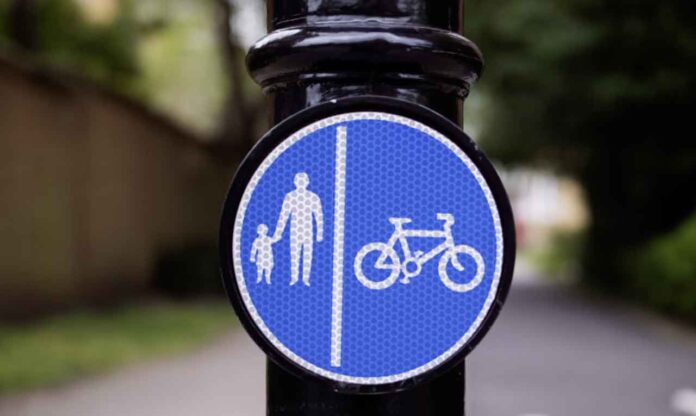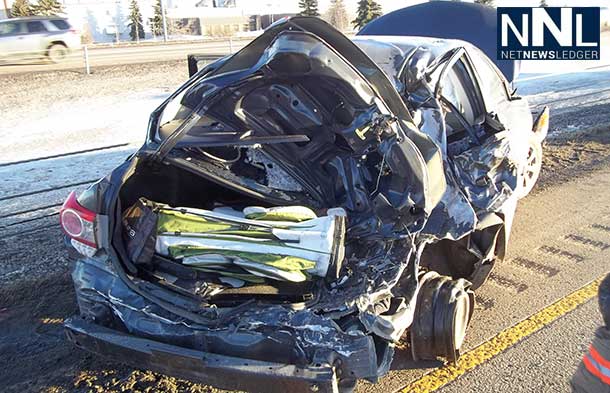Cycling in the US has seen a significant rise in popularity as people embrace it for fitness, commuting, and transportation. With this surge in cyclists, the number of accidents involving bikes has also increased.
Unfortunately, the US is not as equipped as it could be to keep cyclists safe. This has led to a troubling rise in cycling-related injuries and fatalities across the country. The surge in cycling accidents and fatalities demands urgent attention. To make streets safer, the US should examine factors contributing to these incidents and implement strong safety measures.
This article looks into why cycling in the US faces unique safety challenges.
Rising Risks for Cyclists on US Roads
Cycling fatalities in the US have been rising. It is particularly high in urban areas with dense traffic, as the infrastructure often falls short of providing dedicated space for bikes.
The National Safety Council (NSC) reports that cycling fatalities increased by over 45% between 2013 and 2022. The figure increased from 925 in 2013 to over 1,350 in 2022. Of them, nearly 930 fatalities involved motor-vehicle crashes, whereas 432 were linked to other incidents.
Moreover, over 85% of victims were males. Additionally, the Consumer Product Safety Commission reports that in 2022, bicycles and bicycle accessories resulted in over 405,410 emergency department-treated injuries.
Several factors contribute to these tragic accidents. Distracted driving is a major problem. Drivers using phones or focusing on other things pose a serious threat to cyclists. Additionally, the lack of dedicated bike lanes in many cities forces cyclists to ride in close proximity to cars. This absence of proper infrastructure raises the chances of accidents—no wonder many are deterred from cycling altogether.
Road designs usually prioritize cars. Many roads have high-speed limits and lack clear markings for bike lanes. Lack of awareness is another issue. Drivers and cyclists sometimes don’t understand the rules of sharing the road. This can lead to dangerous situations.
Colorado Springs is a city mirroring these national safety issues. KOAA News5 states that 2022 was the deadliest year for residents, as 745 individuals lost their lives in accidents.
In July, a cyclist was seriously injured in a car collision near North Union Boulevard.
Yahoo reveals that the bicyclist sustained severe physical harm from the crash and was admitted to the hospital. While the cyclist was expected to survive, such accidents often cost victims a fortune.
If you’re involved in a cycling accident, it’s important to know your rights. A Colorado Springs personal injury lawyer can help you with the legalities.
According to Springs Law Group, the state operates under the modified comparative negligence policy. This means a cyclist can only recover damages if they are less than 50% at fault for the accident. If the cyclist holds partial responsibility, any awarded damages may be reduced by their degree of fault. A knowledgeable attorney can help clarify these details and protect your rights.
Thankfully, there are efforts to improve safety. Local initiatives are trying to reduce cycling deaths on Colorado roads.
Infrastructure and Policy Gaps
The US is behind other countries when it comes to cycling infrastructure. Nations like the Netherlands and Denmark have designed cities to accommodate cyclists, creating dedicated bike lanes and prioritizing safety in urban planning. In these countries, separated bike lanes and cycling-specific traffic lights reduce conflicts between cyclists and cars, making biking safer and more appealing.
In comparison, the US largely relies on shared roadways, where cyclists compete with vehicles for space.
According to the Insurance Institute for Highway Safety (IIHS), urban areas have recorded at least 80% of cyclist deaths since 2020. Moreover, in 2022, about 35% of fatalities were recorded at intersections and 31% on minor roads.
In contrast, nearly 65% of deaths occurred on key roadways besides interstates and freeways. As more people adopt cycling for transportation, cities across the US would benefit from examining and adopting elements of these global models.
New Challenges With the Rise of E-bikes
While traditional cycling faces safety issues, the increasing popularity of electric bikes (e-bikes) presents additional challenges. From 2019 to 2022, e-bike sales increased threefold. The market was estimated to be worth $2.6 billion as of late 2023. Moreover, the government is encouraging people to adopt this technology.
E-bikes allow for faster speeds, making them appealing for longer commutes and accessible to a broader range of riders. However, higher speeds can lead to more serious injuries and accidents. Additionally, inexperienced riders can struggle to handle e-bikes in traffic, increasing the risk of crashes. Forbes reports that annual injuries involving e-bikes doubled, from 751 in 2017 to over 23,490 in 2022.
Similarly, e-scooter injuries surged by 45% during the same period, rising from 8,566 in 2017 to over 56,845 in 2022. Cities need to consider regulations that are e-bike specific, such as speed limits and designated lanes. They will help address these new risks and ensure safer streets for all cyclists.
Implementing Safety Measures
The growing risks for cyclists require an immediate response from local governments and communities. Here are several actionable steps that can help make US roads safer for cyclists:
- Stronger Legislative Measures: Some states have adopted “Vulnerable Road User” laws that impose harsher penalties for drivers who injure or kill cyclists and pedestrians. These laws could be expanded and enforced nationwide to hold drivers accountable and discourage reckless behavior
- Increased Infrastructure Investment: Investing in dedicated bike lanes, cyclist-only signals, and traffic-calming measures is essential. By creating separate lanes for cyclists, cities can minimize conflicts between bikes and vehicles, significantly reducing accident rates
- Driver Education and Awareness Campaigns: Cyclist safety awareness campaigns can educate drivers on safe practices, like maintaining a three-foot distance when passing a cyclist. These campaigns could help foster mutual respect on the road, making conditions safer for everyone
An example of these initiatives at work is seen in some European cities, where efforts to improve cycling infrastructure have significantly decreased accident rates. If similar measures were taken across the US, there is a strong possibility that cyclist fatalities would decline as well.
Commonly Asked Questions
Q1. Why are bike lanes important for cyclist safety?
Bike lanes provide dedicated space for cyclists, reducing the chances of collisions with cars. These lanes encourage safer driving habits, such as reducing speeds near cyclists and maintaining adequate passing distance. By separating cars and bikes, bike lanes help reduce injuries and fatalities among cyclists.
Q2. How effective are bike helmets in preventing cycling injuries?
Bike helmets lower the likelihood of head trauma and brain injury by 60% and 58%, respectively, when worn correctly. The IIHS found that over 60% of cyclists who died in 2021 weren’t wearing helmets, highlighting their crucial role in safety.
Q3. What are the most dangerous times of day for cycling in US cities?
The IIHS shows that fatal accidents are more common in the late afternoon and evening, between 3 p.m. and 9 p.m. Reduced visibility and increased traffic during these hours contribute to the danger. Cyclists should take extra precautions, using lights and reflective gear.
We need urgent changes to protect cyclists. Cycling is a valuable mode of transport that benefits individuals and communities alike, but current US road conditions pose significant risks. With more people choosing to cycle, either for convenience or as part of a greener lifestyle, the time to address these risks is now.
Urgent actions, like implementing protective laws, investing in cycling infrastructure, and educating drivers, could make cycling a safer and more attractive option. Communities, local governments, and individual citizens all have roles to play in this movement toward safer roads for cyclists. Together, we can create a transportation environment where cyclists are protected and encouraged to ride confidently.







